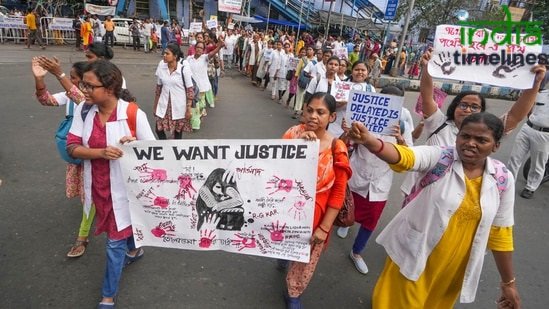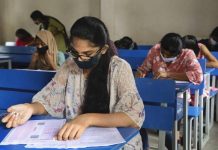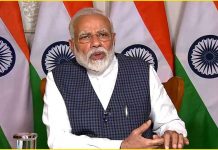
The Nabanna Abhijan of today has captured the attention of the entire state of West Bengal, as students prepare to march in protest against the horrific rape and murder of a doctor. This incident has sent shockwaves throughout the community, and the ensuing march is seen as a significant stand against such heinous crimes. As the tension mounts, the focus shifts to how the Kolkata Police is planning to manage and potentially thwart the protest, raising questions about civil liberties, the right to protest, and the extent of law enforcement in a democratic society.
Background: The Tragic Incident That Sparked the Protest
The roots of today’s Nabanna Abhijan lie in a heart-wrenching tragedy that unfolded just weeks ago. A young doctor, known for her dedication to her profession and her patients, was brutally raped and murdered, leaving the entire state in a state of shock and grief. The incident took place in a city known for its cultural heritage and progressive values, making the crime even more jarring to the public.
The students’ march has been organized as a response to this atrocity, with the aim of demanding justice for the victim and holding the authorities accountable for their failure to protect the citizens. The organizers have called for a peaceful protest, but the authorities are on high alert, fearing that the situation could escalate into violence.
Kolkata Police’s Strategy: A Delicate Balance Between Law and Order
The Kolkata Police, faced with the daunting task of maintaining law and order during the Nabanna Abhijan, have devised a comprehensive strategy to manage the protest. The police are under immense pressure to prevent any disruptions to public life while also respecting the democratic right to protest.
Deployment of Force
One of the primary measures being taken by the Kolkata Police is the large-scale deployment of police personnel across strategic locations in the city. Thousands of police officers, including members of the Rapid Action Force (RAF) and Special Task Force (STF), have been stationed at key points to prevent any untoward incidents. The police have also set up multiple barricades and checkpoints to control the flow of protesters and ensure that the march does not spiral out of control.
Surveillance and Intelligence Gathering
In addition to physical presence, the Kolkata Police have ramped up their surveillance efforts. Drones and CCTV cameras have been deployed across the city to monitor the movement of protesters and gather intelligence on any potential threats. The police have also been keeping a close eye on social media platforms, tracking the activities of key organizers and influencers who may be inciting violence or spreading misinformation.
Communication and Coordination
Effective communication and coordination are crucial in managing large-scale protests like the Nabanna Abhijan. The Kolkata Police have set up a central command center to monitor the situation in real-time and coordinate with various units on the ground. Senior police officials have been tasked with overseeing different aspects of the operation, ensuring that there is no breakdown in communication and that orders are executed efficiently.
Legal Measures and Deterrents
Apart from physical measures, the Kolkata Police have also employed legal tactics to deter potential troublemakers. Several protest organizers and activists have been issued preventive detention orders, and a few have even been placed under house arrest. The police have also warned that any act of violence or vandalism will be met with strict legal action, including arrests and criminal charges.
Public Messaging and Media Management
The Kolkata Police have been proactive in managing their public image and ensuring that their actions are not misinterpreted by the public. Regular press briefings and updates have been issued to inform the public about the measures being taken to ensure their safety. The police have also been engaging with community leaders and representatives to explain the rationale behind their actions and to seek their cooperation in maintaining peace.
Civil Liberties vs. Law and Order: The Ethical Dilemma
The Kolkata Police’s approach to handling the Nabanna Abhijan raises important questions about the balance between civil liberties and law and order. On one hand, the right to protest is a fundamental democratic right, and any attempt to suppress it could be seen as an infringement on civil liberties. On the other hand, the police are tasked with maintaining public order and ensuring that the protest does not lead to violence or destruction of property.
Balancing Act
This delicate balancing act has been a source of controversy, with critics accusing the police of overstepping their bounds and stifling dissent. Human rights organizations have expressed concern over the preventive detentions and the heavy-handed tactics being employed by the police. They argue that such measures could set a dangerous precedent and discourage citizens from exercising their right to protest in the future.
Public Sentiment
Public sentiment is also divided on the issue. While some support the police’s efforts to maintain order and prevent violence, others feel that the authorities are using excessive force to silence dissent. The outcome of today’s Nabanna Abhijan could have significant implications for the future of civil liberties in the state, and the actions of the Kolkata Police will be closely scrutinized by both the public and the media.
Conclusion: The Path Forward
As the Nabanna Abhijan unfolds, the eyes of the nation are on Kolkata. The protest is not just a response to a tragic crime but also a test of the state’s commitment to democratic principles and civil liberties. The Kolkata Police’s handling of the situation will play a crucial role in determining the outcome of the march and the broader implications for law enforcement in the state.
The march also serves as a reminder of the importance of justice, accountability, and the need for systemic reforms to prevent such tragedies from occurring in the future. As the state grapples with these complex issues, it is imperative that both the authorities and the protesters remain committed to peaceful dialogue and resolution.


































Hello i think that i saw you visited my weblog so i came to Return the favore Im trying to find things to improve my web siteI suppose its ok to use some of your ideas
Ledger Live